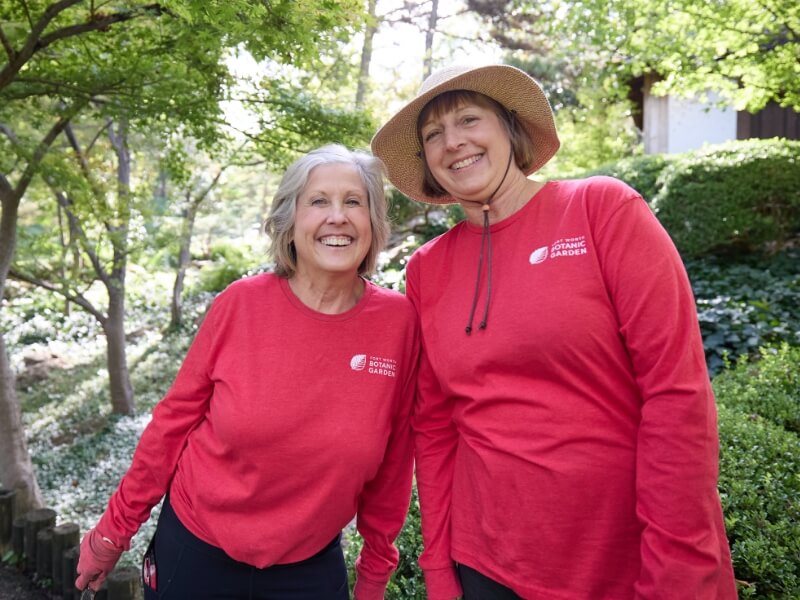Growth of the BRIT Herbarium Collections
Herbaria around the world struggle to keep their doors open, to raise operational funds, to seek the support of their administration, and to keep their collections active and growing. Unfortunately, many herbaria reach a point at which they have to close their doors. The BRIT herbarium has provided a secure location to house many orphaned collections, including those found below this section.
1987 Southern Methodist University Herbarium (SMU)
These approximately 450,000 specimens form the nucleus of the Institute and represent the life’s work of Drs. Lloyd Shinners and Eula Whitehouse. SMU collections include historically important specimens from early Texas botanists, including Ferdinand Lindheimer. With the SMU collection, BRIT gained one of the best collections of Texas bryophytes, including the vouchers for the The Mosses of Texas (Whitehouse & McAllister 1954).
1997 Vanderbilt University Herbarium (VDB)
This valuable collection of specimens represents the life’s work of Dr. Robert Kral and is one of the foremost collections of vascular plants from the southeast U.S. The Vanderbilt Herbarium contains about 400,000 specimens, including many threatened and endangered species. This collection is housed separately from the BRIT/SMU main collection.
2000 Southeastern Oklahoma State University Herbarium (DUR)
This collection of about 78,000 specimens from Oklahoma was donated to BRIT by Drs. John and Connie Taylor. Included in this collection are vouchers for An Annotated List of the Ferns, Fern Allies, Gymnosperms, and Flowering Plants of Oklahoma, by the Taylors (1994).
2001 Houston Public Museum (HPM)
10,000 specimens, collected primarily from the Gulf Coast region by Dr. Alfred Traverse.
2002 Dartmouth College (HNH)
This collection of 25,000 specimens was originally part of the herbarium at Dartmouth. It contains many historically-important collections from the United States, including Texas.
2003 Heber W. Younken Sr. Collection of Medicinal Plants (MCP)
This historical collection consists of about 7,000 medicinal and economically important plants, and was used for teaching by Dr. Youngken at the Massachusetts College of Pharmacy. This collection was a gift from the American Botanical Council in Austin, Texas, who acquired the collection from the college in 2000.
2006 University of Texas, Arlington (UTA)
Approximately 7,000 specimens, primarily collected by UTA professors and students from the North Central Texas area.
2006 Fort Worth Museum of Science and History (FWM)
The personal herbarium of one of Tarrant County’s first botanists, Dr. Albert Ruth (1844-1932). These 8,000 specimens are from Texas and other parts of North America; about half of them were collected by Ruth himself.
2011 Fort Worth Museum of Science and History (FWM)
The remainder of the collection consisting of the personal herbarium of one of Tarrant County’s first botanists, Dr. Albert Ruth (1844-1932) as well as other significant Tarrant County collections.
2017 University of Louisiana at Monroe (NLU)
Over 450,000 specimens from the University of Louisiana at Monroe (formerly Northeast Louisiana University). Renamed the R. Dale Thomas Collection in honor of its most prolific collector and curator, the NLU collection has strengths in Louisiana flora and in the daisy family, Asteraceae.
2021 Hardin-Simmons University (HSU)
Approximately 6,000 specimens consisting of primarily vascular plants and including a small number of non-vascular specimens (e.g. algae). These specimens were collected across the United States and Canada, but the collection has a special emphasis on Taylor County, Texas. Roughly 2,500 specimens were collected by Dr. William F. “Bill” Mahler, who established the herbarium in the 1960s. Dr. Mahler is a special person to the BRIT Herbarium as he was one of the people to establish the Botanical Research Institute of Texas and served as the first director from 1987-1992.
2023 Dr. Allan Nelson Collection (ex TAC)
2024 Austin Community College
Approximately 3,000 specimens. More information to come.
Gretchen and Stanley Jones Palynological Collection
Received by BRIT in 2014, this collection (> 5,000 slides) of pollen specimens was built by Gretchen D. Jones, Palynological Research Scientist, with the Agricultural Research Service (USDA).
Howard Arnott Collection
Received by BRIT 2018, these slides (ca. 4,000 slides) voucher the plant anatomy research conducted by Dr. Howard Arnott, plant anatomist, retired from the University of Texas at Arlington. Of particular interest are those that document his work with the genus Yucca (ASPARAGACEAE).
Shirley Tucker Collection
Received by BRIT in 2018, these slides (ca. 1800 slides) voucher plant anatomy research by Shirley Tucker, lichenologist and plant anatomist, and Boyd Professor Emerita at Louisiana State University.
Edward Schneider Collection
Received by BRIT in 2017-2019, these slides (ca. 1250 slides) voucher ongoing plant anatomy research by Dr. Edward Schneider, plant anatomist and specialist in structure and function of the Nymphaeales, and former BRIT President and Executive Director.
Herbarium Inventory
Since its inception in 1987, the Botanical Research Institute of Texas (BRIT) has been a repository for orphaned herbaria—including the collections from Southern Methodist University, Vanderbilt University, Southeastern Oklahoma State University, and Dartmouth College—and today reports more than one million specimens. Accompanying each acquisition is an approximation for the number of specimens, geographic concentration, and the legacy of many important botanists, together forming a rich but imprecise patchwork. The lack of an accurate account of the collections has hindered the prioritization of research, digitization, and curatorial projects and has limited the exposure of BRIT’s specimens for scientific research. To address these issues, in 2015 BRIT conducted an inventory of its herbarium, recording every species name, a sheet count for each species, and the geographic region of each collection. Over the course of 11 months, 136 volunteers, interns, and BRIT staff members spent 241 person-days inventorying the collection using purpose-built, open-source software called BRIT Rapid Inventory of Specimen Collections (BRISC). The results of the inventory are published here to allow others to gain insight into the taxonomic and geographic scope of the collection.
-
2015
Year Project Initiated
-
136
BRIT Contributors
-
241
Days Spent Inventorying
-
11
Month Process
Inventory Results
Inventory Scope
The inventory of the BRIT herbarium (BRIT, SMU, and VDB) focused on the material filed out into the general collection as of February 2015 and did not include some smaller special collections or unmounted, unfiled specimens. Some collections that have already been databased (e.g., Philippine Plant Inventory collections) were not included in the inventory.
Inventory Summary
882,815
Total sheets inventoried
144,289
Uninventoried estimate
1,027,104
Total BRIT holdings (est.)
Dataset Downloads
Taxonomy
The majority of the taxon names were generously provided by Tropicos (Tropicos.org, Missouri Botanical Garden, 12 Feb 2015, www.tropicos.org). Additional names were recorded verbatim as presented on the specimen sheet. This occasionally introduced invalid or misspelled taxa. The inventory software interface presented undetermined taxa names in the selection lists by prepending “AAA” to the taxon name to make that name appear at the top of the list. The full taxon name is the sequence “AAA – ” followed by the abbreviated taxon rank, then “indet” (e.g., “AAA – Gen. indet”).
Reports
The following reports were generated from the inventory dataset and are provided in the Excel spreadsheet (available above):
Regions – BRIT, SMU, and VDB specimens are organized into one of 16 folder types which represent the region the specimens came from.
Families – The inventory recorded 387 families in the collection.
Genera – The inventory recorded 7,754 genera in the collection.
Species – The inventory recorded 66,135 species in the collection.
Undetermined – Counts of undetermined taxa (at any rank) grouped by family.
Uninventoried – Collections that were not included in the inventory with estimated counts.
Next Steps
- The software used for the inventory (BRIT Rapid Inventory of Specimen Collections – BRISC) is available under an open-source license at https://github.com/jbest/brisc.
- The data from previously databased collections will be incorporated into the inventory dataset.
- The full dataset will be published, allowing for more flexible querying of the data.
- Uninventoried collections will be inventoried and incorporated into the dataset.
Contacts
For questions about the database or to report data errors, please contact Jason Best – jbest@brit.org
For any other issues, please contact the BRIT Herbarium – herbarium@brit.org
More from the Herbarium
Carousel items
-
Plant Collection and Preservation
-
Herbarium Curation Projects
-
Herbarium Digitization
-
Acquisitions, Loans, and Exchanges
-
Plant Identification
-
Armchair Botanist
-
Policies for Use of the Herbarium
More from:
More ways to get involved with the Fort Worth Botanic Garden


